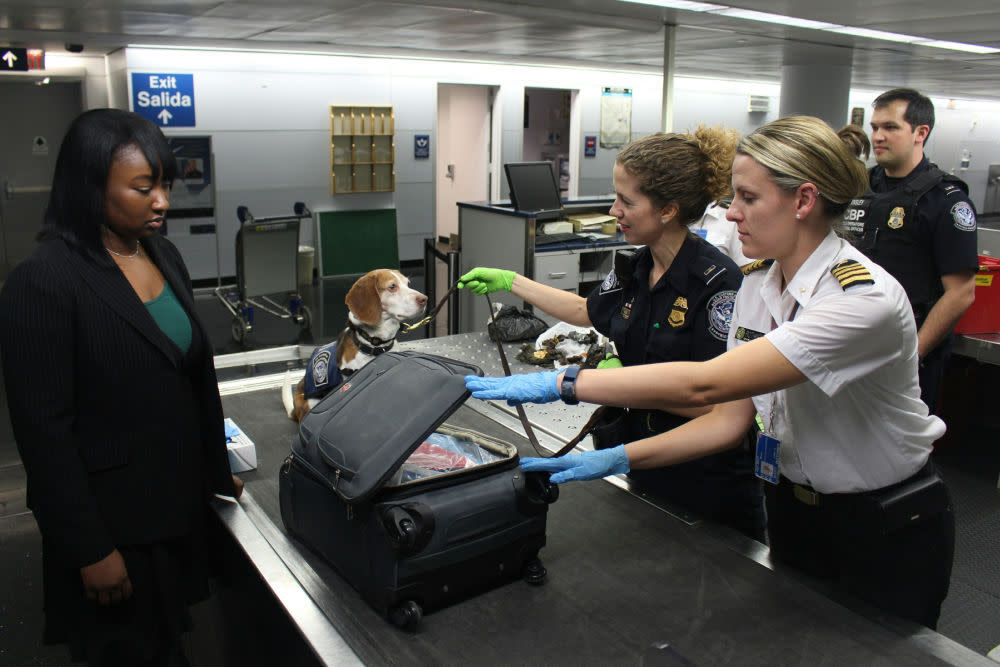Contents
- 1.
- 2.
- 3.
A mileage run is a type of trip where a traveler flies entirely for the purpose of reaching elite status or earning frequent flyer miles. During a mileage run, the destination isn’t the focus; flying itself is the point. It’s all about earning those miles or bumping up to the next elite status level.
Flying several hours to far-flung destinations to turn around and head right back home might seem counterintuitive, but it’s not — at least not for frequent flyers and loyalty program enthusiasts attempting to qualify for elite status or earn more miles. This article will explain more on mileage runs and help you determine if they’re worth pursuing.
How does a mileage run work?
A mileage run can be as easy as hopping from New York (JFK) to Washington, D.C. (IAD), or it can be a wild adventure from Los Angeles (LAX) to Tokyo (NRT) and back without ever leaving the airport. Some mileage runs involve stopping at several airports in a short period, which can be helpful if you need to reach a specific number of flight segments to qualify for status. The type and intensity of a mileage run depends on how many miles or segments you need to reach elite status or how many airline miles you need to top off your account to earn an award flight.
Are mileage runs worth it?
You usually have until the end of the year to reach airline elite status, which means mileage runs often happen near the holidays. It can be complicated, exhausting, and costly to fly around these peak dates, though you may be able to find cheaper prices by flying in mid-December, on Christmas Day, or being flexible with your dates.
The idea with a mileage run is that the value you obtain by getting elite status is higher than the amount you spend on the ticket for your mileage run. Only you can calculate this for yourself, weighing if things like possible seat upgrades, priority boarding, free checked bags, and other elite status perks outweigh the cost of a plane ticket for your mileage run.
The physical and time costs of mileage runs
Just remember to consider all the factors of your mileage run. For example, a 14-hour flight to Dubai (DXB) and then back to the U.S. in economy class may be unpleasant, uncomfortable, and long — and that’s if there aren’t any delays or cancellations, which can often occur during times of inclement weather (winter in most of the U.S., anyone?) or during the popular holiday travel season. Definitely don’t attempt to do a mileage run the Wednesday before Thanksgiving.
If you’re trying to reach a certain amount of miles to have enough to purchase an award flight you’ve been eyeing, a mileage run could be a solid possibility. However, there are other ways to earn lots of miles (which I’ll cover later on) that might make more sense than a last-minute trip halfway across the world in economy class.
Why mileage runs are sometimes less valuable today
The main thing to consider when deciding if a mileage run is worth it is what airline you’re trying to reach elite status with and if a mileage run will actually mean you’ll pass the threshold to get it. Mileage runs aren’t quite as lucrative as they used to be, as the loyalty program landscape is rapidly changing.
Most major airline loyalty programs determine elite status based on how much money you spend with the airline and not how many miles you fly. This means a cheap mileage run, in most cases, isn’t going to push you over the top to hit your status goal.
However, there are certain programs in which doing mileage runs might still be valuable. These include primarily non-U.S.-based airlines that may offer status matches or allow you to earn airline alliance status (like Oneworld Emerald).
Real-world mileage run experiences
Sam, a D.C.-based flyer, recalled one of his favorite mileage runs that helped him qualify for elite status. However, this was more than a decade ago and wouldn’t be nearly as worthwhile today, as the system has since changed.
“Around 2011, under the old United Mileage Plus system, I was 7,000 points short of re-qualifying for Premier Executive and Star Alliance Gold. Obtaining status meant more priority treatment but, more importantly, lounge access when traveling internationally, even when in economy class.
I found a last-minute fare from Washington, D.C. (IAD) to Frankfurt (FRA) for less than $500. In this instance, I didn’t immediately turn around at FRA. Instead, I stayed one quick night and took the morning flight back to IAD. The trip was short but successful. I got to explore Frankfurt briefly, and the extra push and the benefits were well worth the money spent.”
Don’t forget to think about the environmental repercussions that your mileage run may have. According to the International Energy Agency, aviation accounts for 2% of global emissions. You might want to consider your role in contributing to this when deciding if a mileage run is worth it.
Nathan, a frequent flyer based out of Michigan, told point.me that he used to embark on mileage runs frequently, hoping to fly as far as possible for as cheaply as possible.
“These were the days when elite-qualifying miles were actually miles and not a function of how much you spend with a given airline. The major U.S. airlines have all moved to revenue-based programs, which means you no longer earn miles based on the distances flown but rather based on the total amount of money spent with a given airline in a year. This has made mileage runs far less appealing for me, though there are still strategies for making it work.
While the allure of high-tier airline elite status is still very much present for me, I'm tired (and sore) just thinking about the long trips in economy cabins to far-flung corners of the world without even seeing the destination and barely sleeping for the duration of the journey.
Another thing to consider is the environmental impact of flying across the world just for elite status. One of my most lucrative mileage runs, flying from New York to Singapore (to spend only 12 hours on the ground), wasn't exactly the most astute decision from an environmental perspective.”

Alternatives to mileage runs for earning miles or elite status
If you don’t think a mileage run is worth it for whatever reason (it’s not lucrative, you want to lower your carbon footprint, or such a quick trip seems uncomfortable and unappealing), there are other ways to bulk up on airline miles or bump up to that next level of elite status. The transition to revenue-based programs now means you have more ways to earn elite status. All of them involve spending money, so get ready to open your wallet with these ways.
Co-brand airline credit cards
Spending money with an airline is one of the best ways to earn elite status, especially now that most U.S. airline loyalty programs are revenue-based. Getting a co-brand airline credit card can offer a hefty welcome bonus, the ability to earn elite-qualifying miles, or get elite qualifying “boosts” when you reach certain spend thresholds.
For example, the Delta SkyMiles® Reserve American Express Card offers $1 Medallion® Qualification Dollar for each $10 you spend, plus a headstart on elite status qualification with $2,500 Medallion® Qualification Dollars each Medallion Qualification Year, as well as a welcome bonus and other perks. The headstart accounts for half of the MQDs you’d need to reach Delta Silver status (which is $5,000 MQDs).
Transferable rewards credit cards
Flexible rewards cards like the Chase Sapphire Reserve or the Chase Sapphire Preferred come with large welcome bonuses and allow you to earn points that you can later transfer to several different airline loyalty programs. These points won’t count toward elite status, but it means you can follow the deals and, thanks to helpful category bonuses, earn enough points for an award flight of your choice thanks to the program’s redemption flexibility.
Shopping portals
Both bank shopping portals and airline shopping portals are online spaces where you can click through to retailers to earn bonus points on all your shopping. As traditional mileage runs occur around the peak holiday season, it may be more lucrative to earn miles from the comfort of your own home by doing your holiday shopping online instead of having to traipse halfway across the world. These miles won’t help you qualify for elite status on most airlines, though they can get you closer to award redemptions.
Fast track
You might be able to fast-track your way to earn airline elite status by completing a series of flights, shopping, or spending in a specific time period. While these offers are often targeted to specific consumers, sometimes, they’re available to everyone. As annoying as it may be to get frequent emails, always opt-in, as you may get some of the best deals and promotions, including fast-track options, via email. Or, check the promotions tab in your frequent flyer accounts, especially toward the end of the year. For example, at the time of writing through November, Southwest flyers can earn double-tier qualifying points, which can help you get to A-List or A-List Preferred status faster.
Status match
If you already hold elite status with an airline, some loyalty programs will match it in order to “steal” you away and gain your loyalty. For example, Alaska Airlines offers status match options with numerous other airlines, such as Delta, American, United, and JetBlue, where you can get Alaska status for 90 days. American has a program called Instant Status Match (get more info by selecting “AAdvantage account service” and then “Status Match (other airlines)” from the drop-down menus). Or, thanks to partnerships between hotels and airlines, you might be able to gain elite status with one by having elite status with another.
For example, if you connect your United and Marriott accounts, you can earn United Premier Silver status if you hold Marriott Bonvoy Titanium status (registration required). The partnership always works the other way: If you hold United Premier Gold status, you can get Marriott Bonvoy Gold elite status.
When does a mileage run make sense?
Doing a mileage run can still be worth it, but only in certain circumstances. Here are some of those times:
You’re just short of miles for an award
If you have an award flight in mind and need more miles, a quick trip could help you earn those. However, just remember you can also earn extra miles in the ways I stated above without ever leaving your sofa.
You need segments or miles to qualify for elite status
Earning elite-qualifying miles is a bit harder these days. But a trip with several stops, e.g. (LAX-PHX-DFW-TUS-LAX) could help you meet a segment threshold. So, for airlines that still require flying actual miles to get elite status, a mileage run could be worthwhile. A very short but expensive mileage run could help you meet elite spending requirements, but just make sure the benefits outweigh the cost.
You’re dedicated to one airline and travel frequently
Earning elite status is more important if you only fly that particular airline and travel enough to make it count. For example, if you live in Atlanta (a Delta hub) and Delta is the only airline that operates a particular route you frequently fly, earning Delta elite status becomes more valuable, meaning however you can reach status (like a mileage run) can be worth it.
The value outweighs the cost
If you never check a bag when traveling, an elite status perk that offers free checked bags doesn’t offer value to you. In my case, I always push for American Airlines Gold Status so that my entire family can check a bag on flights, as well as get access to more premium seats, which saves me hundreds of dollars each year. Make sure the cost of your mileage run still means elite status benefits have value for you.
When mileage runs are not worth it
When your chosen program is revenue-based
Doing a mileage run may not matter if your program is revenue-based, as a cheap ticket likely won’t earn you enough to get you elite status. Consider spending on a co-branded airline credit card instead.
You’re far off from elite status
Mileage runs work best when you need to tip just over the edge to reach elite status. If you’re just starting off, you won’t be able to earn enough on a mileage run to make it worthwhile.
The costs outweigh the value
If the mileage run ticket is so expensive it negates the value of the elite status or miles you earn, don’t bother.
You value flexibility and have a lot of varied points and mile currencies
While I could still argue that elite status is extremely valuable, if you tend to travel on several different airlines and hold flexible reward cards, the flexibility to earn points and transfer them to various airlines for business-class tickets may be better than spending and doing mileage runs to earn elite status on just one airline and only getting the benefits on that particular airline.
How to plan a mileage run step by step
If you’ve decided a mileage run is the way to go, here’s how to plan one.
Organize what you need to earn
Check your balances and figure out how many miles you need to be able to afford that specific award or how many elite-qualifying miles or segments you’ll need to fly. You’ll also know how much you need to spend if you need to hit a specific number of elite-qualifying dollars.
Use a tool like Air Miles Calculator to figure out how far you’ll need to go and what destinations might be a good fit.
Search for deals
Now that you have some destinations in mind that meet the mileage requirements, start searching. If you need segments, you can head to your airline of choice’s website and search for the cheapest flight with the most segments. If it’s miles, look for the most affordable option that gets you the airline miles you need. And if you’re short on elite-qualifying dollars, a short but more expensive flight in business or first class might do the trick. You can also search on Google Flights, which includes a lot of filters, like just one airline and flexible dates.
Do the math
Make sure your deal will get you where you need to be, and make sure the money you spend is worth the elite status benefits or additional miles you need to reach a coveted redemption. If you’re spending thousands on a mileage run to get enough miles for an award flight from New York (JFK) to Miami (MIA), it’s probably not worth it.
Book your flight and fly
If you find something that works, book it and complete your mileage run. Then, reap the benefits of your elite status or mileage return.
Need help planning a mileage run? Let a point.me expert plan an itinerary to earn the points you need with minimal expense. Book now



